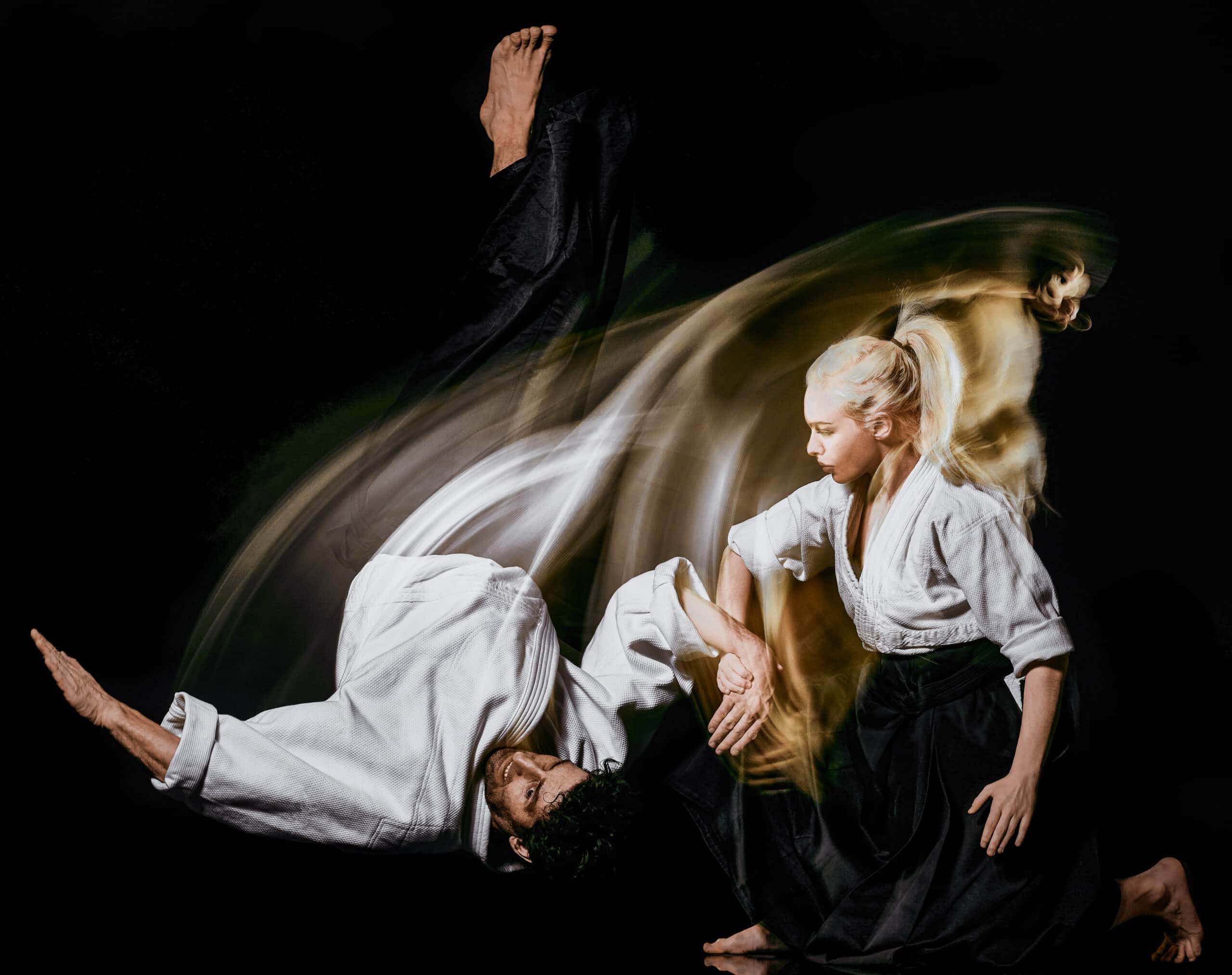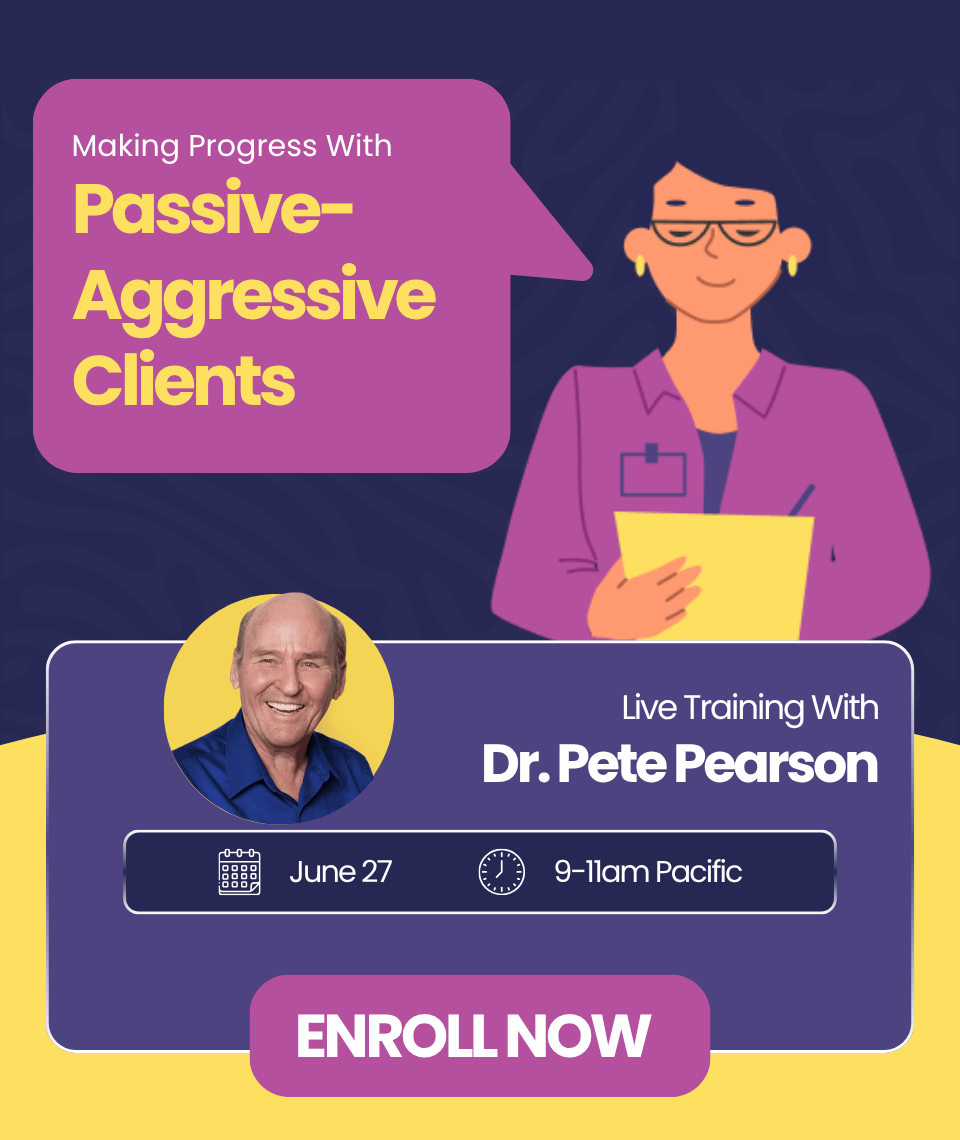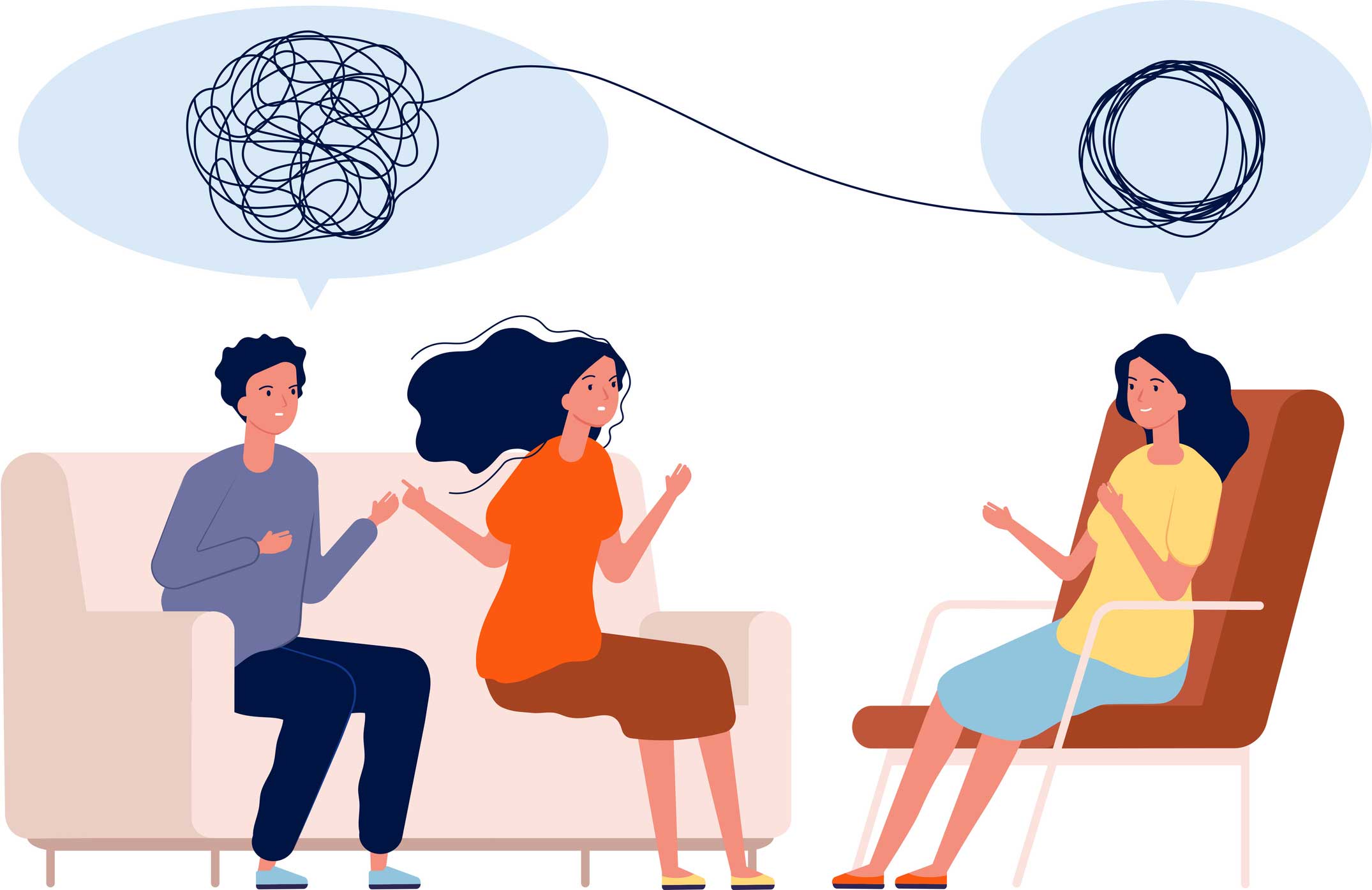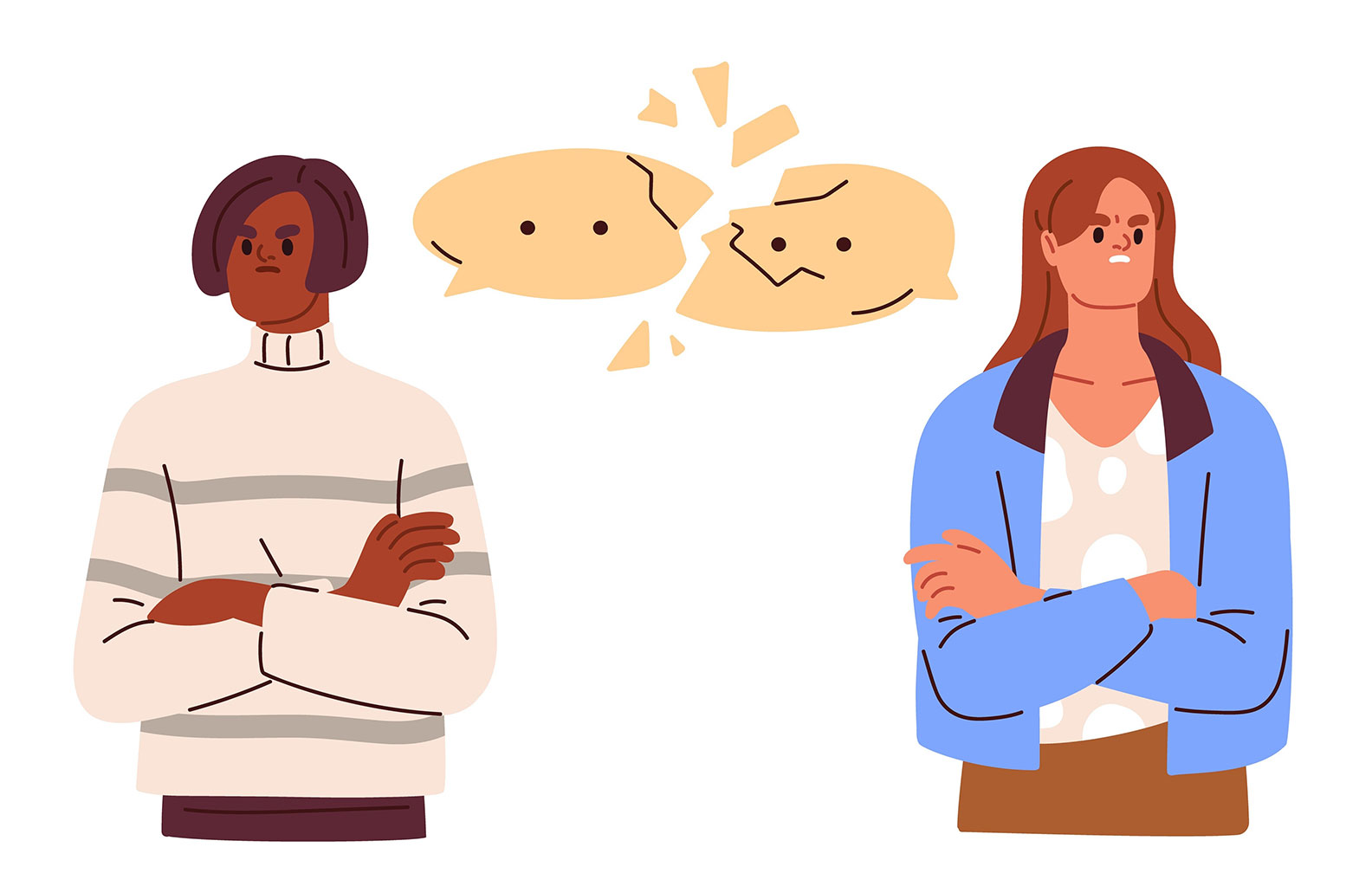The Japanese sensei who developed Aikido described it as the art of tapping the energies found in any life situation as a means of finding innovative solutions.
When I came across a YouTube video of Aikido master Richard Moon, I felt captivated by the smooth, almost effortless movements he used to redirect an opponent without doing harm.
As he explains, Aikido isn’t a series of techniques for winning a fight. Instead, it’s peace in action. “In our metaphor,” he says, “the attack represents the energy of change.”
Inspired by his words, I felt driven to learn more about the philosophy at the heart of this powerful yet calm practice.
Three simple principles for peaceful engagement
What I find remarkable about Aikido is that harmony, not strength or skill, is the crucial resource in redirecting conflict.
The three core principles of this martial arts practice are:
- Presence: our ability to feel where we are; bringing our attention to focus on what we’re experiencing
- Harmony: our capacity to sense the energies of the situation; listening rather than forcing an opinion
- Creativity: our willingness to share who we are in pursuit of answers
Richard offers these principles as insights into the gentle, yet decisive movements seen in his video – but also as essential guidance for living. (If you’re feeling intrigued, check out “Life in Three Easy Lessons,” his free downloadable book.)
These principles seem important not only for couples in conflict or in the midst of change, but also for us as we lead them into creative solutions, new behaviors, and different ways of relating to each other.
I value having new avenues to reach couples, new ways to describe their inner work. Aikido has been around for about 100 years, and other martial arts have been practiced much longer. I can imagine lots of couples who can relate to these ideas. I especially like how the first two principles – being present and being in harmony with the situation – point towards the creative solutions. And note that being in harmony doesn’t mean agreeing or shutting down. It means listening rather than resisting. It means not forcing an opinion.
You have surely noticed in your work how much clients’ attitude affects outcomes. Here is a discipline that invites an attitude of presence, strength, and openness. All these attributes point towards better outcomes for you and your couples.
I also like seeing how these ideas fit with the Developmental Model framework. Once again, the Developmental Model proves to be an ideal structure for change, welcoming and integrating new ideas in a way that supports couples at every stage.
How do you view these concepts? I’d love to hear your thoughts
I was struck by the parallels between Aikido and our work as couples therapists. Our efforts to redirect the energies within conflict, meet aggression in a mindful way and help couples turn toward each other all come to mind.
But more than anything, I’m interested in your thoughts. Do these principles resonate with you? Is there anything inside Richard’s message that you find especially inspiring?
I look forward to reading your comments. Thank you for being part of our extended community and contributing to our shared growth.
Speaking of community, an extra thank you goes to community members Lauren Ostrowski who gifted me with Zen in the Martial Arts (Joe Hyams) and Midge Lane who shared this video. Both have inspired me about the parallels between therapy and the martial arts.
Take Action Now
- Leave a comment below to start off the conversation.
- And to learn more about the Developmental Model, check out this free training series that starts January 23.


 We respect your privacy.
We respect your privacy.




Wow, this is so timely for me! My colleague and I are giving a talk next month at a group psychotherapy conference on using the principles of martial arts to work with aggression, both in ourselves as clinicians and in our clients. We are boxers and wrestlers, so we work with this energy differently, but similar principles apply. We train to work with our minds and impulses to channel that energy into creativity rather than destruction. Thanks for sharing.
Grace -Let us know how your talk goes.
That’s amazing ..as I’ve been facing a struggling situation at work & ever since I got sick & stayed at home; focusing on helping my spirit to rest & get cleaned from all the energies threw upon me, & to receive new ways & messages in dealing with troubled people, I’ve been receiving messages on how to remain present & how to let myself be spontaneous in the upcoming encounter / meeting, trusting for a higher wisdom to guide my spirit, now this video with the manifestation of movements helped me to complete the lesson learnt so far: which is presence strengthen your spirit & helps you face whatever encounter while being rooted in your identity, facing any energies from a place of presence not of threat or defense , listening with curiosity to what is happening ; then your powerful spirit with spread vibes of change & creative solutions will manifest; declaring that you have been victorious from the first place ..not the victory of winning the argument or the other person, rather winning in self-control (fear, worry, ..etc) & in facing whatever with peace & serenity.
Thank you Ellyn for sharing such video..always grateful for your emails.
I wonder if the first principle is mindfulness.
I have a client whose former wife has a borderline personality disorder diagnosis. She continually manipulates the children to alienate them from my client and to provoke his anger and thwart his good efforts to connect with his children. This includes endlessly taking him to court and endless escalating provocations. I have encouraged him to take a psychological aikido approach but he is exhausted from even taking this more helpful aikido approach. What would you suggest to help him with at this point in an Akkido approach to dealing with a full blown borderline personality with narsacisstic overlay former wife, around the issue of her alienating her children from their father? Thank you
You might check out the book giving in to get your way. By Terry Dobson.
In my therapy group we focus on the developmental model. This is what I posted to the rest of the group in our slack today after reading this and watching the video: I don’t know how many of us get Ellyn’s blog, but the most recent post really struck home for me. I’m not usually super star struck by metaphors between therapy and other activities, but this post and the referenced video on Aikido kind of blew my mind. It really speaks to the struggles I had as a therapist early in my career (and continue to at times), and that I went through again when I started learning the developmental model. While I’m not currently that hung up in resisting what is as a therapist, it’s a persistent problem for me as a parent, and watching this video has given me some helpful insight into that part of my life. Also, as soon as the Covid numbers recede enough, instead of going to family therapy I’m dragging my whole family to an Aikido dojo. Seriously, I’m going to do that.
Hi Ellyn,
I love this video – though I’m still trying to figure out just what he means by being present to the energy of the other.
I know it’s something we sense.
I guess in the practice of Aikido, presence means noticing what the other person is bringing and orienting to it differently – what he calls harmonizing. Not resisting or opposing, but ‘going with it’?? Seeing what I can work with and work around?? When I would interview young families for childcare, I sensed their fears and concerns though they did not voice them directly. I’m a mother after all and had utilized family childcare. I’d been there. It always surprised me how they would ask about curriculum for infants – as if that’s a thing. And of course, hours and fee.
I would speak though, to other things, the more important issues left unstated. I would say things like,
“You notice my front door is open. (I have an all-glass screen door.) I like it that way. It lets the sunshine in. And you’re welcome to stop by whenever you like. What you see is what you get. I don’t claim a fancy curriculum, my hours are limited, and I’m expensive. In my experience, children 3 mos to 3 years need a warm smile to greet them each day, lots of face time and interaction, a place that feels like a second home. They need care – not warehousing for the day. Children need to feel loved and they feel loved when they are attended to. They need limits – to keep them safe which helps them feel safe. They need good nutrition, time indoors and outside in the fresh air to romp around, play and explore. They need quiet time and rest – a predictable routine – but with a measure of flexibility to the unique needs each child invariably has. It’s not rocket science, but these things are essential. And to do that consistently and well, I limit the number of children I care for and my hours, so I can do just that. It’s what I wanted for my son when he was in daycare, and why I started a childcare business of my own – to be home with my daughter. So, by extension, it’s what I offer you and your little one.”
Conversations like this almost always seemed to put people at ease. Though I was a business, I wasn’t trying to ‘sell them’ on anything – I knew the value of what I had to offer. It was their choice to decide if it was what they were looking for. But I could always tell – because I felt it. In twenty years, I never needed to advertise my services and I never lacked for clients.
Maybe that’s what I need to be doing in the therapy session. Some version of noticing the underlying fears and needs and hopes – and speaking to them – and to the development that is needed. That is a lot more complex than caring for children. Children are easy and fun. It’s the parents who were confounding.
Warm regards,
Debra
I am a long time student of Aikido as a martial art and as a philosophy. A key component is reducing resistance by initially going with (vs. pushing against) your opponent.
Pete did a great training where he started the session by saying to each member of the couple, “I want to see how good of a listener you are. What would your partner say the issues are?” (not an exact transcript of what he said, but close)
Instead of starting with each person pushing against the other, saying everything that is wrong with their partner and what that person needs to change, (pushing against, resistance “That’s not true! I’m not the problem, YOU’RE the problem”)….you get them moving together…”Is what the other person said accurate? Have the been listening to you? Did they miss anything important?”
That’s actually a great example of Aikido.